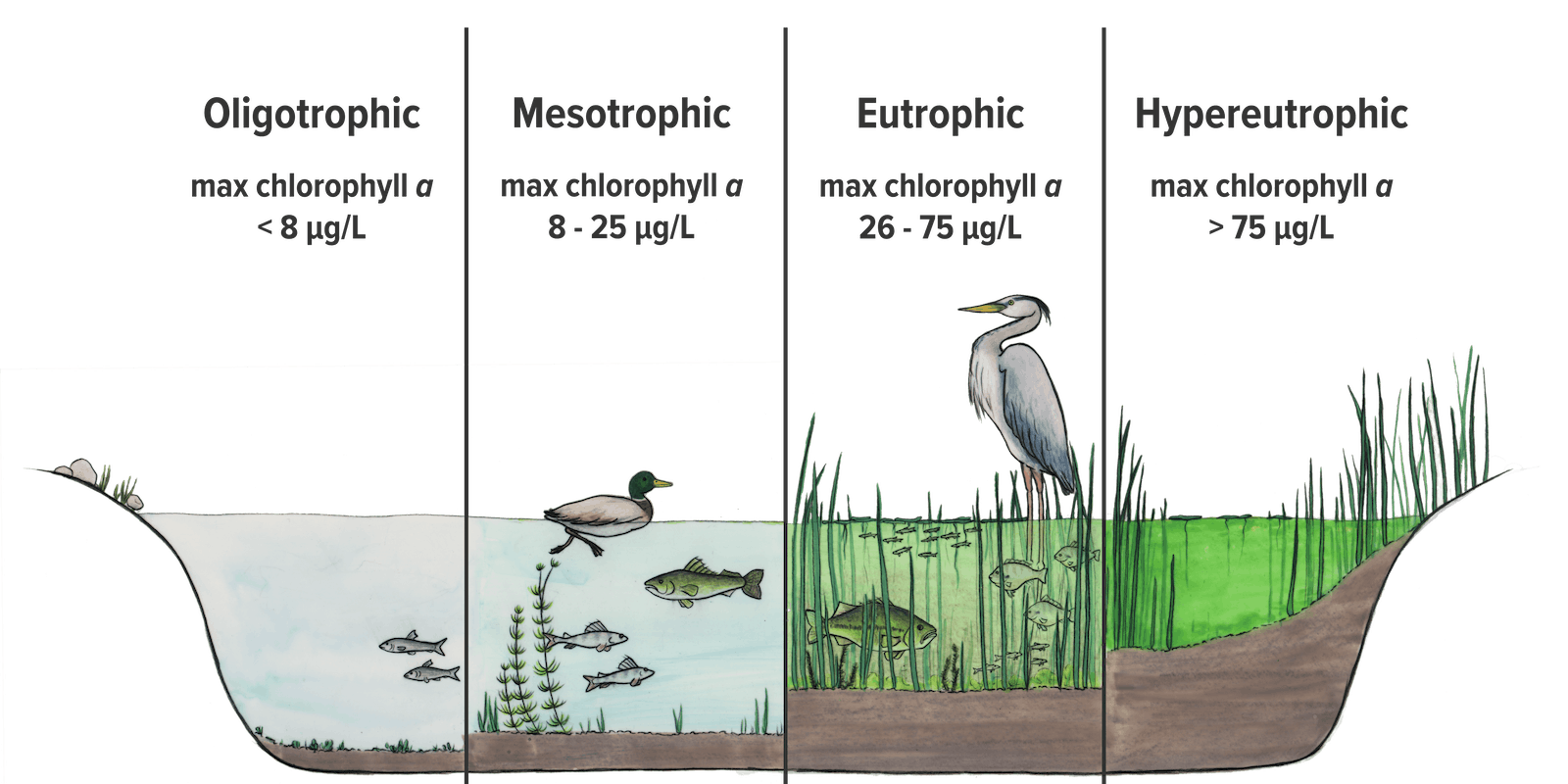Some water bodies have naturally high levels of chlorophyll whereas others have naturally low levels of chlorophyll. In general, lakes and rivers in the Arctic tend to have naturally low chlorophyll, but this is not always true. Values over 75 µg/L indicate hypereutrophic conditions that are not healthy.
What is it?
Chlorophyll is a green pigment found in all green plants and cyanobacteria (blue-green algae). Chlorophyll is essential to photosynthesis, a process where plants convert sunlight into chemical energy.
Along with phosphorus, chlorophyll is often used to estimate productivity in a water body. Productivity refers to the amount of plant and animal life that a lake or river can support. Low productivity lakes are called oligotrophic, while high productivity lakes are called eutrophic.
We tend to see algae blooms and associated fish die-offs in lakes that are eutrophic and hypereutrophic.

Algae blooms happen more often in lakes and rivers where human activities contribute to increased nutrients coming into the water (e.g., sewage and agricultural runoff). Algae blooms are also more common in warm temperatures and in still water.
Why does it matter?
More chlorophyll in lakes and rivers indicates more algae. Algae are important because they form the base of the food chain, but too much algae can be harmful.
Under certain conditions, algae can grow quickly and cause a “bloom” which can cover lakes with green scum or make the water look greener than normal. When algae die, bacteria decompose them and use up oxygen in the water. These low oxygen conditions are harmful to fish and other aquatic life. Certain species of blue-green algae (cyanobacteria) can also produce harmful toxins.

The trophic state of a water body describes the amount of biological productivity in a water body. Eutrophication happens when lakes and rivers become enriched by nutrients which spur plant and algae growth.
How is it measured?
Chlorophyll is measured by a specialized sensor. It is typically measured from a water sample sent to the lab, but some field sensors exist. Chlorophyll a is a specific type of chlorophyll that is commonly measured.
The amount of chlorophyll in water is usually highest in summer and lowest in winter, so it is important to monitor it in different seasons.
Chlorophyll is influenced by: water temperature, phosphorus, at times nitrogen.
Chlorophyll influences: dissolved oxygen, organic carbon.